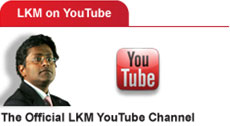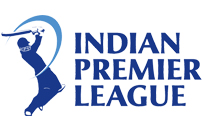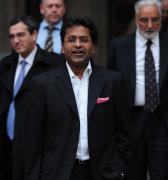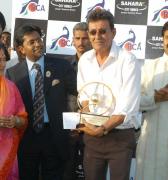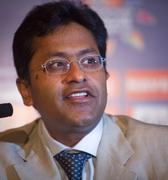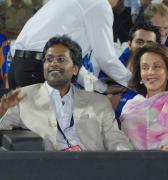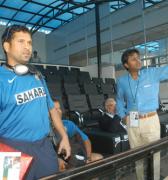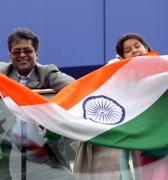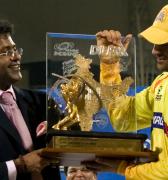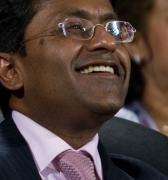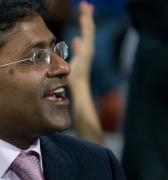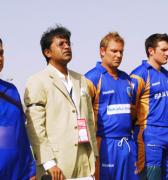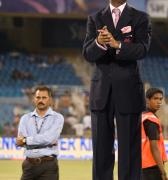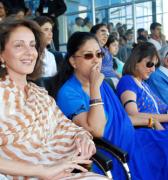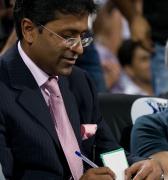Players not eligible for IPL revenues: Deloitte
CoA had tasked the Deloitte to make recommendations and create an “operating manual” for the BCCI
Financial services firm Deloitte has said BCCI’s gross revenue doesn’t include the money generated by the IPL — an assessment that undercuts former coach Anil Kumble’s suggestion earlier this year that players’ share of the pie should be 26 percent of all board income including the league revenues.
The Committee of Administrators (CoA) had tasked the Deloitte to make recommendations and create an “operating manual” for the BCCI — a draft handbook on core principles and policies for administration of the cricket board. The BCCI, meanwhile, has effectively discarded Kumble’s recommendation.
“Players Eligible Revenue Share is computed based on the Net Eligible Revenue (NER) earned by the Board. Net Eligible Revenue represents: The Total Income Earned by the Board in each financial year (April to March), excluding the revenues/surplus earned from IPL and other one-off tournaments organized by the Board, Interest and Other Income earned by the Board,” the Deloitte manual defined. It said that the NER is reduced by “Production Costs relating to Media Rights on International Matches” and “Amounts Due to Associations for the relevant financial year charged to the Income & Expenditure Account”.
The manual stressed on “transparency” and “fairness” with regard to players’ payments, while highlighting “Reward based on Category” and recognition for “superior performance”. It has called for prompt and direct payment and advised that the General Manager (cricket) to be the “single point contact” for the players.
“There’s no ambiguity. Deloitte hasn’t changed the gross revenue definition. The IPL is a separate vertical. Players are making huge contributions, but they are being adequately paid through their franchises for that. And you can’t be paid twice for the same thing,” a BCCI functionary told The Indian Express.
“The difference between the two models (Kumble and Deloitte) is that Kumble has taken the complete top-line number based on the (BCCI) annual report. While the correct number is the revenue, where the players have their direct contributions. To implement Kumble’s presentation in toto, the BCCI would be in a loss of Rs 200-250 crore. That’s not a practical way of doing it. Deloitte knows all the numbers and their document is principles-based,” he added.
Simply put, revenue from media rights, team sponsorship rights, apparel sponsorship rights, series sponsorship rights etc. are part of gross revenue with respect to players’ entitlement. Incidentally, Kumble in his presentation document to the BCCI had said: “There are some disconcerting aspects that needs to be addressed – deducting transfers to State units (estimated at 70% of media rights) and lack of clarity whether IPL media rights are part of the media rights income and so also BCCI’s share in ICC revenues. These elements reduce the overall emoluments amount available for distribution to players and support staff involved with international cricket. It is suggested that the Gross Revenue to be used should be all income less any direct production costs involved in realising the income.”
The Deloitte manual has broken the players’ revenue share as 13 per cent for international cricketers, 10.40 per cent for senior domestic cricketers, 1.60 per cent for junior domestic cricketers and 1 per cent for women cricketers. In addition to that, 1 per cent has been reserved for players’ association to be formed through a steering committee as per the Lodha Committee recommendation accepted by the Supreme Court.
With an eye to professionalise the whole structure, Deloitte has proposed an end to ad hoc payments even for performance-related incentives. The BCCI has been advised to put aside an additional 3 per cent of the NER to reward “superlative performance of the players under various categories”, to be distributed “as per the directions of the Apex Council”.
Another 10 per cent of the NER has been earmarked for rankings. Deloitte has proposed an additional five per cent for Virat Kohli and Co if they finish the season as the No.1 Test team in the world.
Three per cent of the NER has been suggested for finishing as No.2. For ODIs, the proposed revenue share for finishing No.1 and No.2 is three per cent and two per cent respectively, while for T20 internationals, the figures advised are two per cent and one per cent respectively.
The Deloitte manual, however, is still a working document that has been sent to the BCCI office-bearers by the COA. The final approval lies with the general body.
Financial services firm Deloitte has said BCCI’s gross revenue doesn’t include the money generated by the IPL — an assessment that undercuts former coach Anil Kumble’s suggestion earlier this year that players’ share of the pie should be 26 percent of all board income including the league revenues.
The Committee of Administrators (CoA) had tasked the Deloitte to make recommendations and create an “operating manual” for the BCCI — a draft handbook on core principles and policies for administration of the cricket board. The BCCI, meanwhile, has effectively discarded Kumble’s recommendation.
“Players Eligible Revenue Share is computed based on the Net Eligible Revenue (NER) earned by the Board. Net Eligible Revenue represents: The Total Income Earned by the Board in each financial year (April to March), excluding the revenues/surplus earned from IPL and other one-off tournaments organized by the Board, Interest and Other Income earned by the Board,” the Deloitte manual defined. It said that the NER is reduced by “Production Costs relating to Media Rights on International Matches” and “Amounts Due to Associations for the relevant financial year charged to the Income & Expenditure Account”.
The manual stressed on “transparency” and “fairness” with regard to players’ payments, while highlighting “Reward based on Category” and recognition for “superior performance”. It has called for prompt and direct payment and advised that the General Manager (cricket) to be the “single point contact” for the players.“There’s no ambiguity. Deloitte hasn’t changed the gross revenue definition. The IPL is a separate vertical. Players are making huge contributions, but they are being adequately paid through their franchises for that. And you can’t be paid twice for the same thing,” a BCCI functionary told The Indian Express.
“The difference between the two models (Kumble and Deloitte) is that Kumble has taken the complete top-line number based on the (BCCI) annual report. While the correct number is the revenue, where the players have their direct contributions. To implement Kumble’s presentation in toto, the BCCI would be in a loss of Rs 200-250 crore. That’s not a practical way of doing it. Deloitte knows all the numbers and their document is principles-based,” he added.
Simply put, revenue from media rights, team sponsorship rights, apparel sponsorship rights, series sponsorship rights etc. are part of gross revenue with respect to players’ entitlement. Incidentally, Kumble in his presentation document to the BCCI had said: “There are some disconcerting aspects that needs to be addressed – deducting transfers to State units (estimated at 70% of media rights) and lack of clarity whether IPL media rights are part of the media rights income and so also BCCI’s share in ICC revenues. These elements reduce the overall emoluments amount available for distribution to players and support staff involved with international cricket. It is suggested that the Gross Revenue to be used should be all income less any direct production costs involved in realising the income.”
The Deloitte manual has broken the players’ revenue share as 13 per cent for international cricketers, 10.40 per cent for senior domestic cricketers, 1.60 per cent for junior domestic cricketers and 1 per cent for women cricketers. In addition to that, 1 per cent has been reserved for players’ association to be formed through a steering committee as per the Lodha Committee recommendation accepted by the Supreme Court.
With an eye to professionalise the whole structure, Deloitte has proposed an end to ad hoc payments even for performance-related incentives. The BCCI has been advised to put aside an additional 3 per cent of the NER to reward “superlative performance of the players under various categories”, to be distributed “as per the directions of the Apex Council”.Another 10 per cent of the NER has been earmarked for rankings. Deloitte has proposed an additional five per cent for Virat Kohli and Co if they finish the season as the No.1 Test team in the world.
Three per cent of the NER has been suggested for finishing as No.2. For ODIs, the proposed revenue share for finishing No.1 and No.2 is three per cent and two per cent respectively, while for T20 internationals, the figures advised are two per cent and one per cent respectively.
The Deloitte manual, however, is still a working document that has been sent to the BCCI office-bearers by the COA. The final approval lies with the general body.
(Courtesy: The Indian Express)






